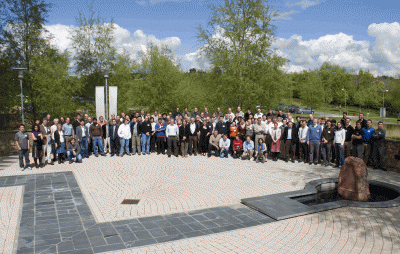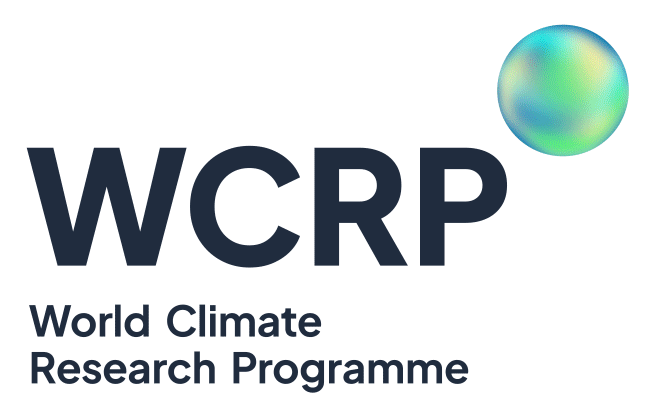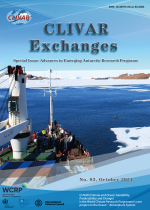About - WGOMD Workshop on Ocean Mesoscale Eddies
UK Met Office Hadley Centre, Exeter, UK
Monday, 27 April, 2009 - Wednesday, 29 April, 2009
 |
 |
 |
 |
The global ocean is a highly turbulent fluid, with scales of motion from the millimetre to global, on time scales from seconds to millenia. One of the most energetic scales is the mesoscale, where variability occurs due to the chaotic dynamics of geostrophic turbulence. Mesoscale eddies are a critical element in the establishment of ocean tracer properties, they provide an avenue for affecting the ventilation of heat, Carbon, and other tracers, and they support rich levels of biological activity.
A key weakness of nearly all global climate models is the absence of an explicit representation of ocean mesoscale eddies. Absent an explicit representation of eddies, ocean models rely on parameterizations. The most popular parameterizations of mesoscale eddies originate from the neutral diffusion scheme of Solomon (1971) and Redi (1982), as well as the eddy induced stirring of Gent and McWilliams (1990) and Gent et al. (1995). Many studies have shown that these parameterzations provide for improvements to the simulations relative to models run in their absence. Nonetheless, there remain many unresolved questions which form the focus of a very active research community aimed at providing more robust and flexible parameterizations.
In parallel to the research aimed at understanding how to parameterize the mesoscale, the modelling community has steadily seen an increase in the numerical integrity of codes used to simulate the ocean circulation, and an increasing power of the computers on which the codes are run. This activity has led to a few global, or near global, simulations with eddies explicity admitted. New configurations of coupled climate models are being developed at some of the main climate centres, where an explicit representation of mesoscale eddies presents a key constraint setting the ocean resolution.
Besides the scientific motivation mentioned above, there are two further reasons to consider a workshop focusing on ocean mesoscale eddies.
Although nearly 20 years have passed since Gent and McWilliams (1990), we have arguably only just begun to intellectually penetrate the ocean mesoscale parameterization problem. This workshop intendes to honour the hugely provocative and critical role that the Gent and McWilliams (1990) paper has played during the past 20 years. It is the keystone paper that initiated the flurry of research aimed at uncovering rational theories for the mesoscale.
In January 2008, Professor Peter Killworth passed away. Peter was a friend, colleague, and mentor to many ocean scientists. His work represents a massive intellectual contribution to the field of oceanography, with particular input to the mesoscale parameterization problem. The WGOMD hopes to honour Peter's memory by aiming to promote further research and insight to this important problem at this workshop.

Radar image taken by the Shuttle Imaging Radar-C showing two large ocean eddies next to sea ice in the Weddell Sea, Antarctica, on October 5, 1994, The eddies sweep up loose bits of sea ice, mostly pancake ice, in their rotating currents. Very new ice is seen in the darkest areas. First- year ice is green. Open ocean is blue. The image was processed with the ASF Radarsat processor. It has a larger size than all the other SAR images seen here, having a size of 240km by 360 km. The colors are denied by combining 3 radar channels: L-band VV is blue, L-Band HV is green, and C-band VV is red. From http://southport.jpl.nasa.gov/polar/sarimages.html
References
Gent, P. R. and McWilliams, J. C.: Isopycnal mixing in ocean circulation models, Journal of Physical Oceanography, 20, 150-155, 1990.
Gent, P. R., Willebrand, J., McDougall, T. J., and McWilliams, J. C.: Parameterizing eddy-induced tracer transports in ocean circulation models, Journal of Physical Oceanography, 25, 463-474, 1995.
Redi, M. H.: Oceanic isopycnal mixing by coordinate rotation., Journal of Physical Oceanography, 12, 1154-1158, 1982.
Solomon, H.: On the representation of isentropic mixing in ocean models, Journal of Physical Oceanography, 1, 233-234, 1971.














